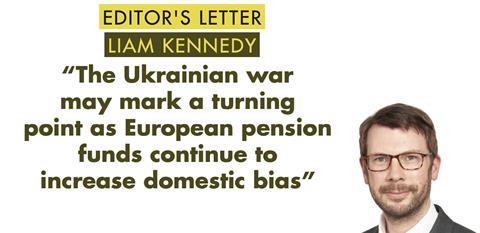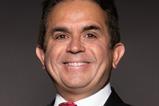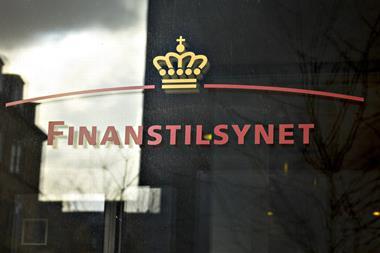A health check for defined funds as Russia’s invasion of Ukraine raises questions about diversification and energy

Over the course of last year, a combination of buoyant equity markets and slowly increasing bond yields helped edge pension funding levels to a comfortable zone as long-bond yields have edged up.
So far in 2022, pension funding levels have held up quite strongly. In the Netherlands, ABP reported that its coverage ratio improved in February, from 107.9% to 111.0%.
In the UK, the aggregate surplus of the Pension Protection Fund 7800 index decreased by about 9.6% to £133.6bn (€160bn) by the end of February, and the average funding ratio decreased from 109.1% to 108.4%. The aggregate UK pension funding level has been over 100% for a year now, the first extended period of surplus in many years.
This provides a level of comfort for DB pension plans, even if clouds were already gathering towards the end of 2021 as the edge began to rub off the fragile post-stimulus rally in markets and inflation numbers began to notch up.
But March’s rout in bond markets was accompanied by a rotation to equities and market volatility looks set to continue. Last month, euro money markets were pricing in two ECB rate hikes by the end of the year, according to ING. Rising interest rates will at least help soften the impact on balance sheets.
COVID-19 may also be having a liability reducing effect for pension funds. The health analytics team of the consultancy LCP wrote in January that there is a case for a reduction in IAS 19 liabilities of up to 2% in some cases. This is due both to the direct impact of COVID and the indirect impact of higher heart disease, stroke and cancer deaths. In UK terms this translates to a reduction in liabilities of £35bn.
The impact of inflation on corporate sponsors will also weaken balance sheets, even as bond yields edge up. But rising inflation is the most worrisome for portfolios, with euro-zone inflation for March expected to top 6%. Other than perhaps intelligently sourced property or quality equities, seeking attractively valued companies with robust pricing power, there are few places to find good returns, with most inflation-proofing investment categories already richly priced.
Investors are, of course, caught in the crosshairs of economic warfare, but they are also subject to intense political pressure. Perhaps the strongest effect is the concerted divestment of European and other institutional investors from Russian markets – giving the lie to the old truism that pension funds are slow decision makers.
Other countries, such as Myanmar, have been subject to pension divestments, but not since South Africa in the 1980s has there been such strong pressure to divest. And for most European pension funds the decision to divest from Russia has been remarkably swift and uncontroversial.
Of course, most European pension funds had a rather low exposure to Russia in the first place, so the impact is rather limited. In the longer term, the invasion of Ukraine presages a worrying cleft between the reality of global supply chains and an overturning of the post-War global internationalist order.
Some, like Larry Fink, CEO of BlackRock, believe the Ukrainian war signals the end of globalisation as we know it. At a macro level, this scenario will put a brake on GDP growth and temper return expectations.
Europe’s resolve to take economic action against Russia has not extended to energy, but we can predict with some certainty that there will be increasing calls on pension funds to finance energy transition as the continent weans itself off Russian gas.
Pressure from government and others to increase domestic investment in key economic sectors and assets, like venture capital and infrastructure, is not new. Such calls are only likely to continue.
The good news is that mature pension fund liability sheets are a good match for secure cashflow yielding investments in areas like renewables infrastructure, which need to be ramped up to build European energy resilience. But most of the benefits tend to accrue to first movers and players with scale, which underlines the already strong case for pension consolidation.
The hope must be that Russia’s act of aggression will come to a peaceful conclusion soon. Then there will be a focus on recovery and a need for long-term capital to fund reconstruction.
For now, following two-and-a-half decades of global diversification, the Ukrainian war may mark a turning point as European pension funds continue to increase domestic bias in their portfolios. They may look fondly back on the era of BRICs, globalisation, low inflation and the seemingly inevitable rise of global prosperity.
Liam Kennedy, Editor
liam.kennedy@ipe.com





































No comments yet